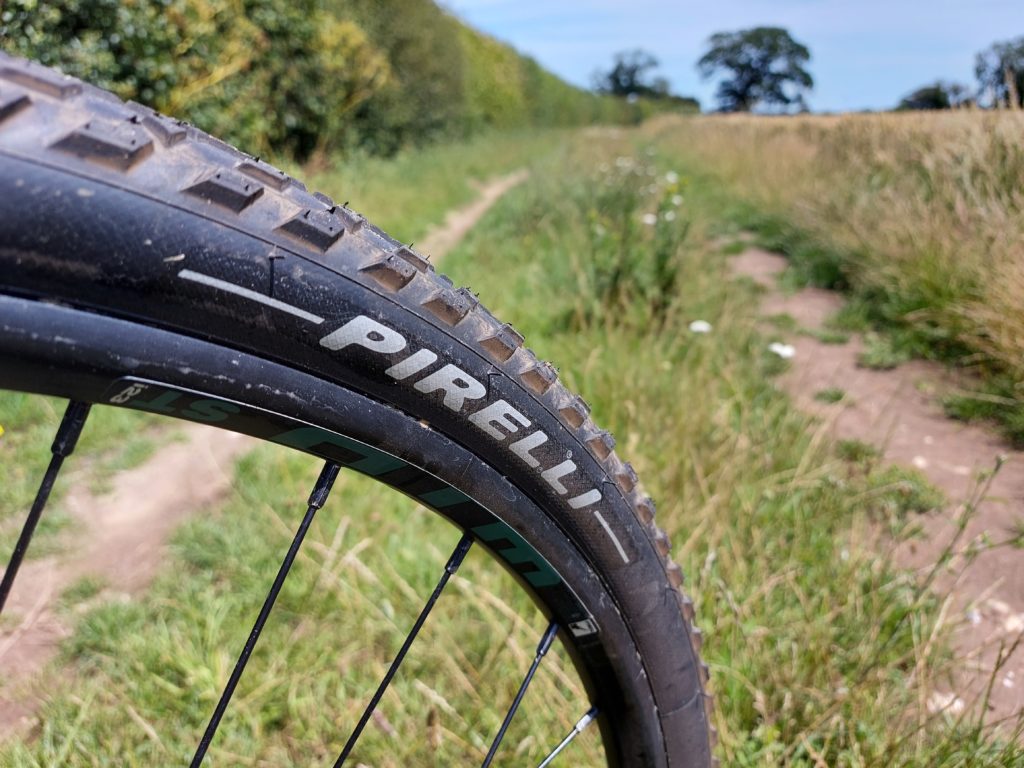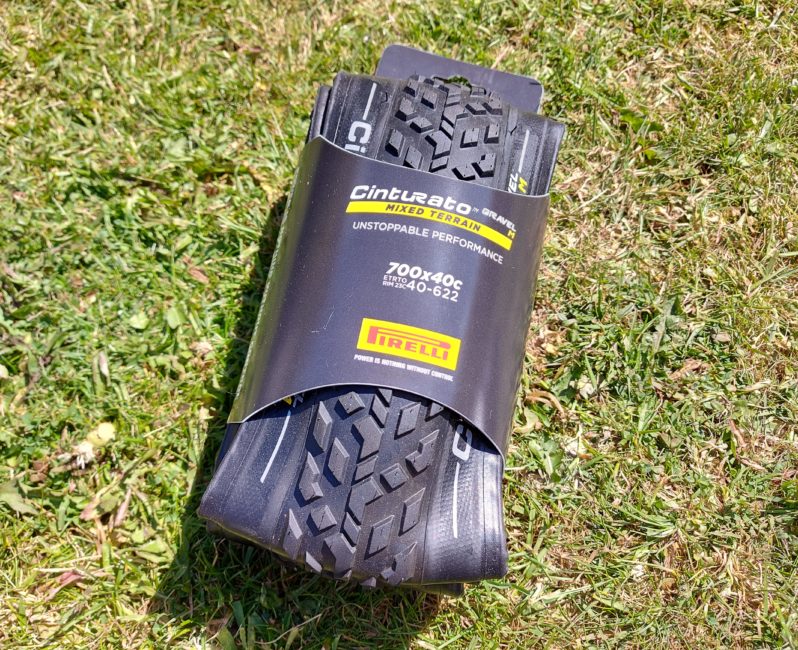If you have even the slightest passing interest in motoring then you’ll be familiar with Pirelli tyres. After decades out of the bicycle tyre market they’ve returned with all guns blazing. First with the P-Zero road tyre (a name shared with their high-performance sports car tyre line) and now for the gravel rider with the Cinturato Gravel. Available in two tread patterns, you can choose from the H for hard packed terrain, or the M for mixed (loose or muddy) terrain. The last time I set eyes on a car with Cinturatos was an OG Mini Cooper. Sharing that branding with a pocket-rocket rally car seems a good fit!
Construction
If you get bewildered by the litany of different compounds, sidewalls and tubeless options that some tyres come in you’ll find the Pirelli’s a blessed relief. You get to choose between a 35, 40, or 45mm tyre in 700c and a 45 or 50mm in 650b. After that it’s down to whether you want classic tan or black side walls. All models share the same bead to bead nylon puncture resistant belt, kevlar beads and speedgrip tread compound. Pirelli claim a weight of 500g for the Cinturato and the scales of destiny here at Advntr Towers concurred.

The cinturato comes with either ‘classic’ sidewalls (tan) or ‘yellow’ sidewalls (black!)
Ease of fitment
After releasing the Pirelli’s from their packet, and giving them a moment to regain their shape, I fitted them to a set of WTB i23 rims. They went on without fuss and their beads found their place with a satisfying pop. There was a slight leak around the bead but no infuriating weeping through the sidewalls. The front tyre took a ride to fully settle down and stay inflated, while the rear was perfect from the get go. The last set of tyres fitted to these rims behaved in the exact opposite way so nothing to worry about.

Farmer Johns for the 21st century?
On the trail
Typically, we received the Mixed conditions version during a testing period that was almost exclusively bone dry. To their credit the Cinturatos didn’t make us feel like we were dragging unnecessary rubber around. The almost continuous centre line of raised tread keep the Pirelli’s spritely on hardpack and black-top link sections between trails. When the trail crumbled to dust the tread and low pressure volume sees you through to the other side. The sidewall protection is a good balance between sturdy and supple. It’s not hard to balance comfort, pace and stopping rim dingers with tyre pressure.

Power is nothing without control they say…
Summary
As you take the Cinturato out of the packaging you can feel that it’s a tough, well made and good quality product. Fitting and tubeless set up were a breeze too. The RRP of £55 is in line with similar premium tyres like the Teravail Cannonball or Schwalbe G-One Bite TLE. Obviously our expectations were high, based on Pirelli’s reputation, and also for a European made product (France in this case) and the Cinturatos didn’t disappoint. While they didn’t get much chance to shine in the wet they proved fast and reliable, and the local thorns and flints also failed to pierce their armour. For a product is touted as an all-rounder Pirelli have achieved this with precious little compromise.
Pirelli tyres are available in the UK through Extra UK.
Last modified: 21st October 2020














so, WTB Nano or Pirelli Gravel M, which one for the autumn/winter?
What do you think about lowering the pressure under the psi recomended by Pireli? For a 700×40 I find the lowest psi recommended (36 psi) a bit high. What could be the risk of ignoring that recomendation?
Hey there! great question, unforunately James who was testing these tyres isnt around to respond. But depending on how low you want to go, there are benefits but also with these benefits come some problems.
Going to low pressure can distort the sidewalls, and this inturn will cause cracking of them, making them weaker andprone to tears, also running less than recommended psi will leave your rims exposed to being dented, or in the case of carbon, chipped and cracked.
There is always the option of running an insert to minimise this damage but alof this will depend on what kind of riding you will be doing on it.
Hope that helps, and sorry I cant talk specifically about the Cinturato –
Happy trails!
Thanks, Michael, I am using 31 psi in the front wheel and 33 in the rear and until now it has been great. Also because of the threat pattern of the Pirelli Cinturato m, I don’t feel the need to go lower, but I have noticed that they lose air sooner than my Hutchinson Touaregs, so I guess that could be one thing to consider. Greetings.